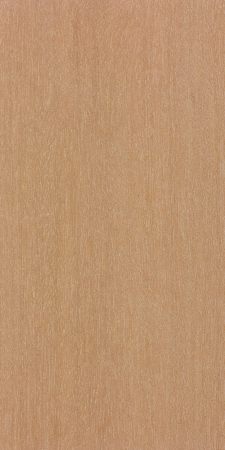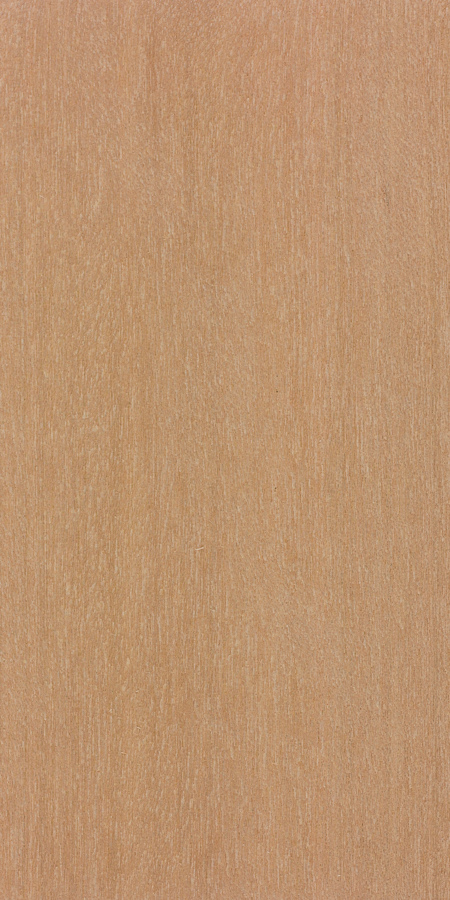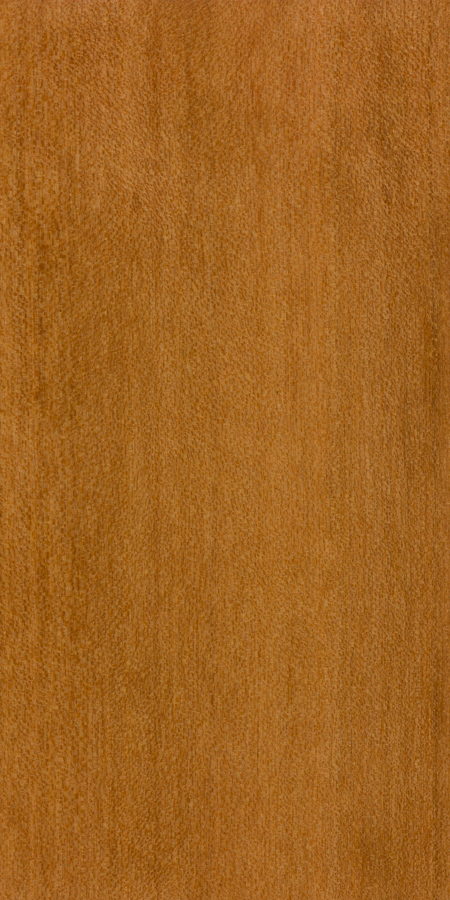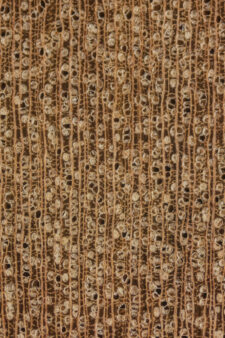Common Name(s): Abura, bahia
Scientific Name: Mitragyna ledermannii (sources commonly use the obsolete Fleroya genus; see comments below)
Distribution: West and Central Africa
Tree Size: 100-115 ft (30-35 m) tall,
3-5 ft (1-1.5 m) trunk diameter
Average Dried Weight: 34.8 lbs/ft3 (560 kg/m3)
Specific Gravity (Basic, 12% MC): 0.45, 0.56
Janka Hardness: 820 lbf (3,670 N)
Modulus of Rupture: 11,760 lbf/in2 (81.1 MPa)
Elastic Modulus: 1,386,000 lbf/in2 (9.56 GPa)
Crushing Strength: 6,220 lbf/in2 (42.9 MPa)
Shrinkage: Radial: 4.3%, Tangential: 9.2%,
Volumetric: 13.3%, T/R Ratio: 2.1
Color/Appearance: Has a uniform yellow to pinkish-brown color, with sapwood indistinct from heartwood.
Grain/Texture: Fine texture and a straight or slightly interlocked grain.
Rot Resistance: Non-durable; poor resistance to decay or insect attack. Good acid resistance.
Workability: Takes glue and finishes well. Has a slight blunting effect on cutting edges and tools due to a moderate silica content (about .25%).
Odor: Has an unpleasant odor when freshly cut.
Allergies/Toxicity: Has been known to cause allergic reactions including: nausea, eye irritation, giddiness, and vomiting. See the articles Wood Allergies and Toxicity and Wood Dust Safety for more information.
Pricing/Availability: Seldom available in North America. Prices should be moderate when compared to other imported lumber.
Sustainability: This wood species is not listed in the CITES Appendices, but is on the IUCN Red List. It is listed as vulnerable (both Mitragyna ledermannii and M. stipulosa) due to a population reduction of over 20% in the past three generations, caused by a decline in its natural range, and exploitation.
Common Uses: A general-purpose lumber used for furniture, interior millwork, plywood, and flooring.
Comments: Sometimes sold under the commercial name bahia, there are only three species, all coming from Africa, that are used interchangeably as abura lumber. The most common is Mitragyna ledermannii (and its synonym M. ciliata), along with M. stipulosa. The third and least common is M. rubrostipulata. These species have been formerly placed in the Hallea genus (now considered a synonym), and later in Fleroya[1]Deng, Y. (2007). Fleroya, a substitute name for Hallea J.‐F. Leroy (Rubiaceae). Taxon, 56(1), 247-248., but have since been placed into Mitragyna based on genetic testing: “Our analyses reaffirm the paraphyly of Fleroya (= Hallea sensu Leroy 1975), as shown by Razafimandimbison and Bremer (2002) and Manns and Bremer (2010). Accordingly, the generic status of Fleroya is untenable, and we formally put Hallea J.-F. Leroy and Fleroya Y. F. Deng as synonyms of Mitragyna“ [2]Löfstrand, Stefan D., et al. “Phylogeny and generic delimitations in the sister tribes Hymenodictyeae and Naucleeae (Rubiaceae).” Systematic Botany 39.1 (2014): 304-315..
Images: Drag the slider up/down to toggle between raw and finished wood.
Identification: See the article on Hardwood Anatomy for definitions of endgrain features.
Porosity: diffuse porous
Arrangement: ranges from exclusively solitary to predominantly radial multiples of two to four pores
Vessels: medium to large, few to moderately numerous
Parenchyma: diffuse-in-aggregates
Rays: narrow to medium width; normal spacing
Lookalikes/Substitutes: None.
Notes: Individual Mitragyna species can’t be reliably separated from each other on the basis of anatomy.
Related Content:
References[+]
| ↑1 | Deng, Y. (2007). Fleroya, a substitute name for Hallea J.‐F. Leroy (Rubiaceae). Taxon, 56(1), 247-248. |
|---|---|
| ↑2 | Löfstrand, Stefan D., et al. “Phylogeny and generic delimitations in the sister tribes Hymenodictyeae and Naucleeae (Rubiaceae).” Systematic Botany 39.1 (2014): 304-315. |










